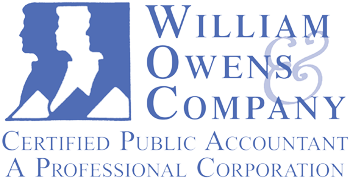
The deadline for implementing the FASB’s new leases accounting standard, ASC 842, is fast approaching. Many private companies are only just now realizing that they need to examine their leases in light of the new requirements to bring most leases on-balance sheet. Adding right-of-use assets and corresponding liabilities could change important ratios and impact lending agreements, and more.
If you haven’t already, now is the time to think about how you will ensure compliance in 2020.
Overview of the Standard
The FASB passed this new standard due to concern that a company’s balance sheet did not truly reflect its assets and liabilities without including lease obligations. After all, they are an ongoing expense and, in some industries, can significantly impact the business’s results.
An agreement counts as a lease if it contains the right to control the use of a specific asset or the lessor obtains substantially all of the asset’s economic benefits. Both conditions must be met for you to consider your agreement to be a lease. Under ASC 842, companies can have three types of leases; a sales-type lease, a direct financing lease, or an operating lease.
Sales-Type Leasesunder ASC 842 for Small Companies
Only lessors can classify some leases as sales-type leases. With this type of lease, you derecognize the underlying asset and account for the net investment in the lease on the Balance Sheet. There are three main criteria that a lease must meet to qualify as a sales-type lease. The fair value of the leased property must vary from its carrying amount at the lease inception; it must involve real estate, and there must be a transfer of ownership to the lessee at the end of the lease.
The net investment is based upon the total of the present value of all future lease payments plus the unguaranteed residual value. Interest income is added to the net investment, and then payments are decreased from the net investment over time.
Finance Leases under ASC 842 for Small Companies
All leases with terms longer than a year and greater than $5,000 in value now count as a finance lease. In addition, the lease must transfer the underlying asset to the lessee at the lease’s end. A finance lease must have the option to purchase, and its term must represent the majority of the asset’s remaining economic life.
When you sign a new finance lease, you must record a liability based on the present value of future lease payments and offset this liability with a right-of-use asset. With a finance lease, you must determine the borrowing rate implicit in the lease. This can be your incremental borrowing rate.
If your business has no debt, and therefore no way to estimate its borrowing rate, private companies must reach out to their banks or other lenders to find out what they would be charged to borrow.
Operating Leases under ASC 842 for Small Companies
Leases with terms of twelve months or less are considered operating leases under ASC 842. This means that you will not have to bring them on-balance sheet. While you must recognize lease expense on a straight-line basis over the lease term, with an operating lease, you do not have to recognize the interest and amortization expense.
The FASB considers the lease’s term to begin from its inception date, which they have not clearly defined. Some companies are choosing to use the date the lease commenced as the inception date, while others have selected the date the lease was signed.
It’s important to note that, for the period of adoption, whether or not a lease is considered short-term does not have to do with the time remaining on the lease. Therefore, if there is only six months remaining on the lease on the adoption date but it was originally a three-year lease, you cannot consider it an operating lease.
Embedded Leases and Private Companies
Companies have been struggling with the concept of “embedded leases.” These are leases contained within a larger lease agreement. It could be an agreement within your master office lease to also lease storage space, or data hosting and other hosting arrangements could contain an embedded lease if specific resources are set aside and dedicated to your company.
Under the new standard, if you fail to identify and properly account for an embedded lease you could have to restate your results or face internal control risk.
Sale-Leaseback Transactions under ASC 842
With sale-leaseback transactions, the lessee (seller) sells an asset to a lessor (buyer) for consideration, and then turns around and makes rent payments to the lessor to retain use of the asset. In the past, a sale-leaseback transaction was off-balance sheet, but now these must be accounted for on-balance sheet.
The terms and conditions for these transactions can be quite complicated, and you are best served involving accounting professionals in both structuring and accounting for them.
Tax Implications of the New Standard
With the new standard, you could have the option of capitalizing certain transaction costs such as third-party commissions and recovering them through amortization. How you decide to handle these costs will impact your tax filings. If you have previously not capitalized theses costs and have decided to now follow your financial statements, you will have to file a form with the IRS to make this change.
It is important to discuss how this new standard will impact your taxes with your accountant and solicit their advice on the best path forward for your business.
The standard is effective for private companies in 2020, so if you have not begun the adoption process, you are fast running out of time. The good news is that many smaller companies could only have one or two leases in place, likely a lease for office space or a copier lease. As well, public companies have already adopted ASC 842, and you can look at their filings for a template and roadmap to adoption.
